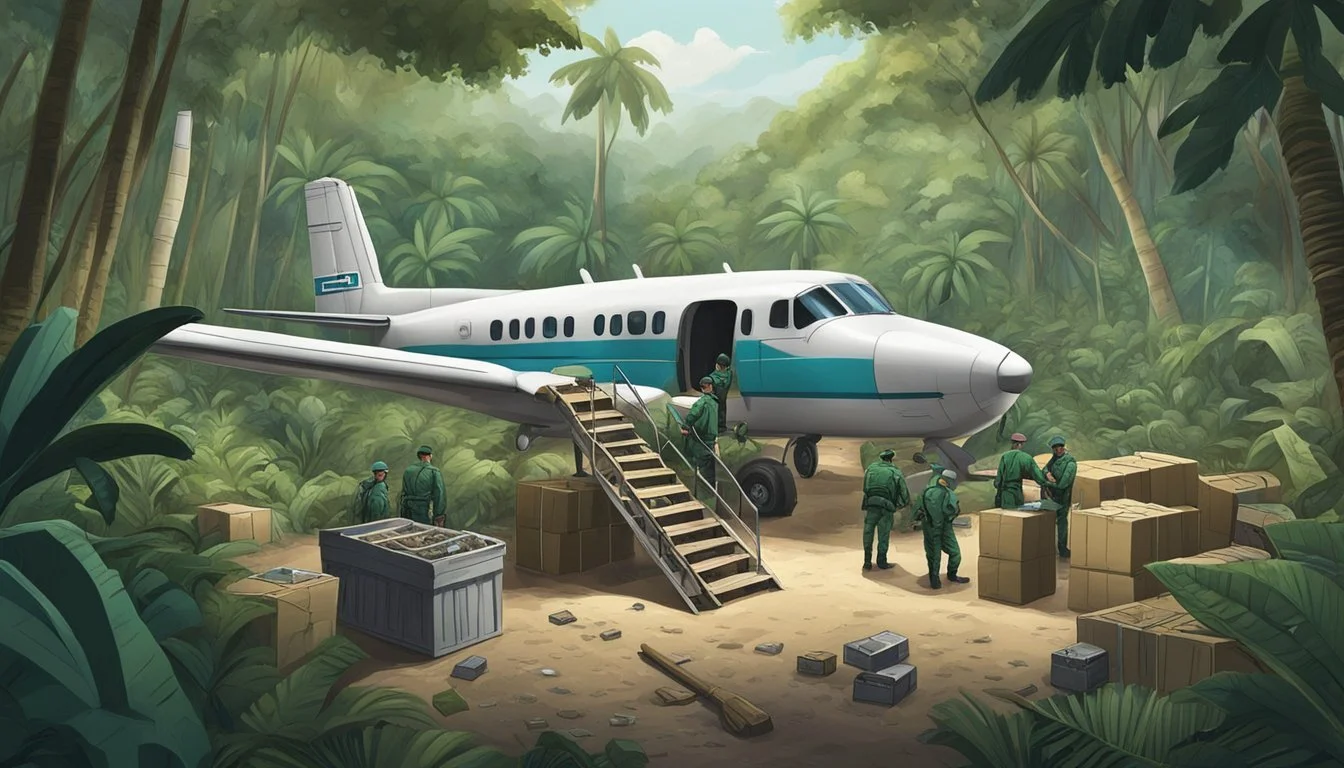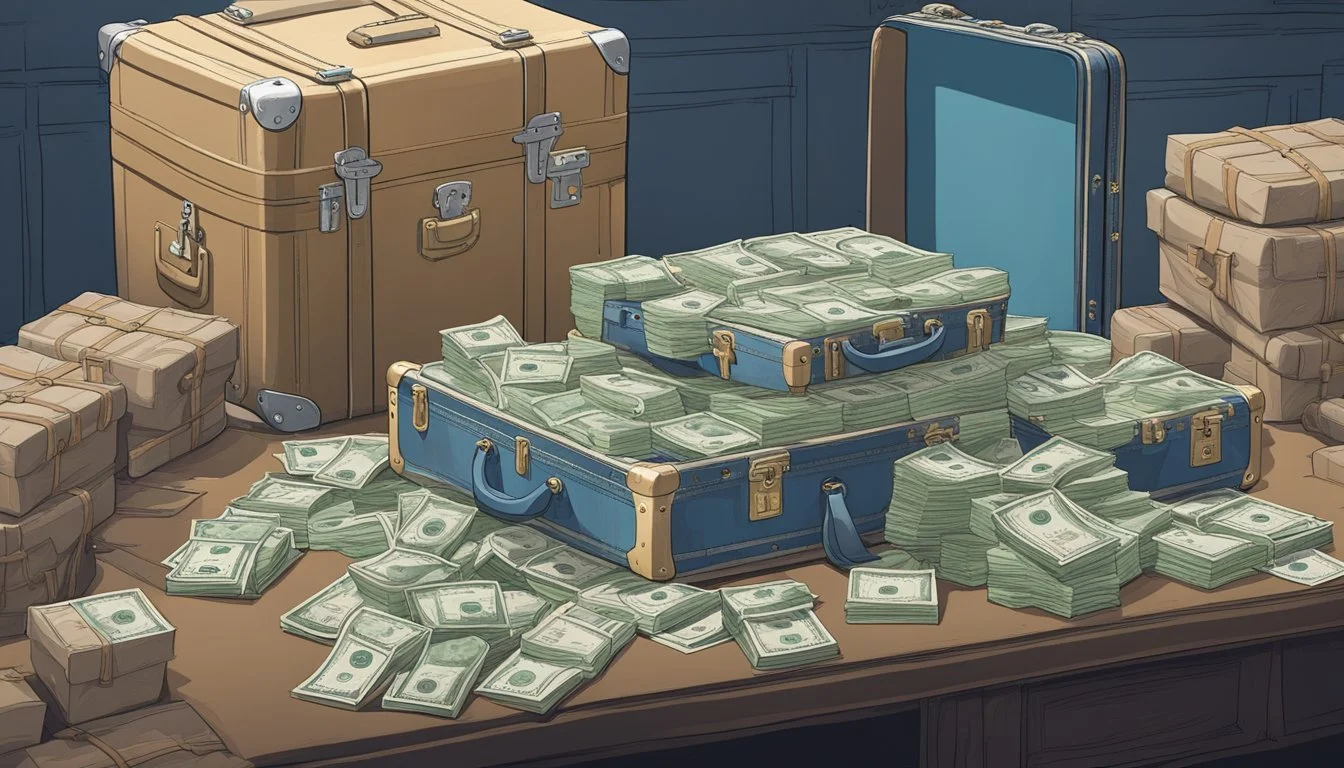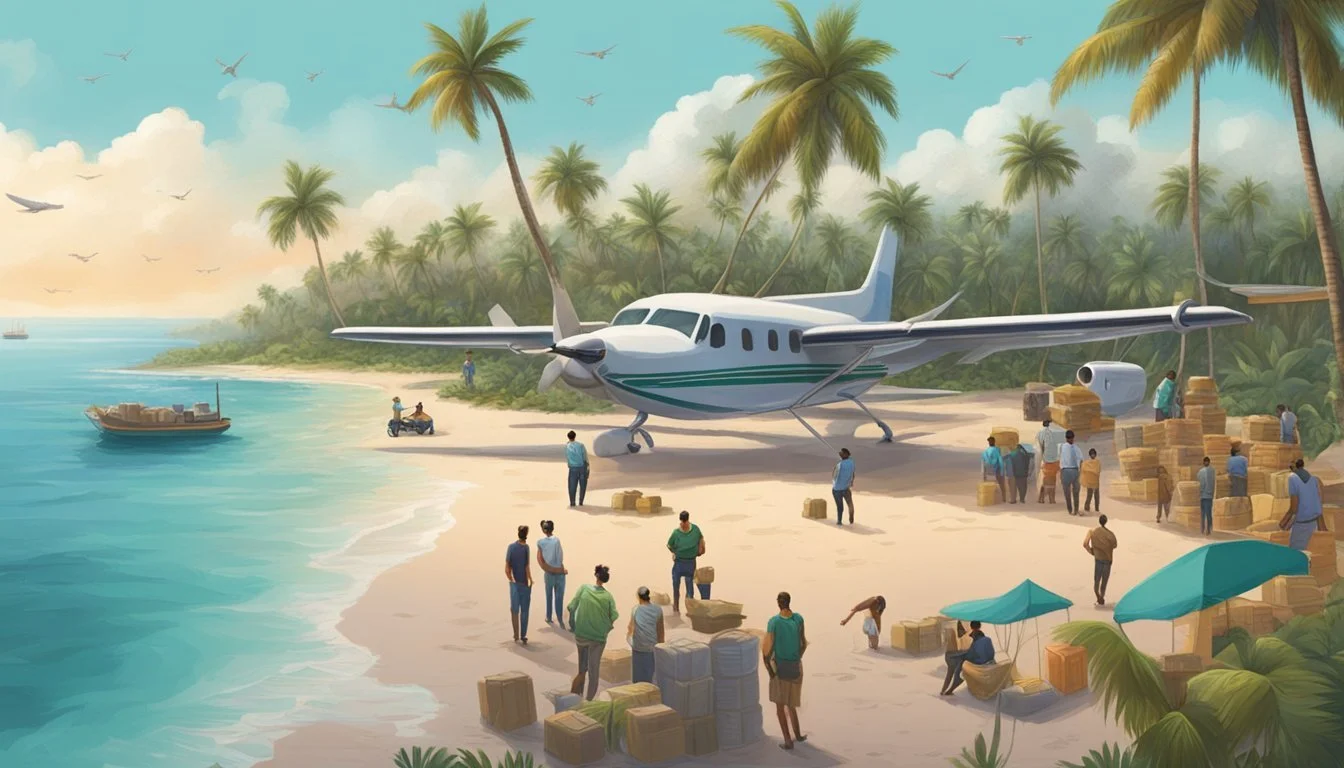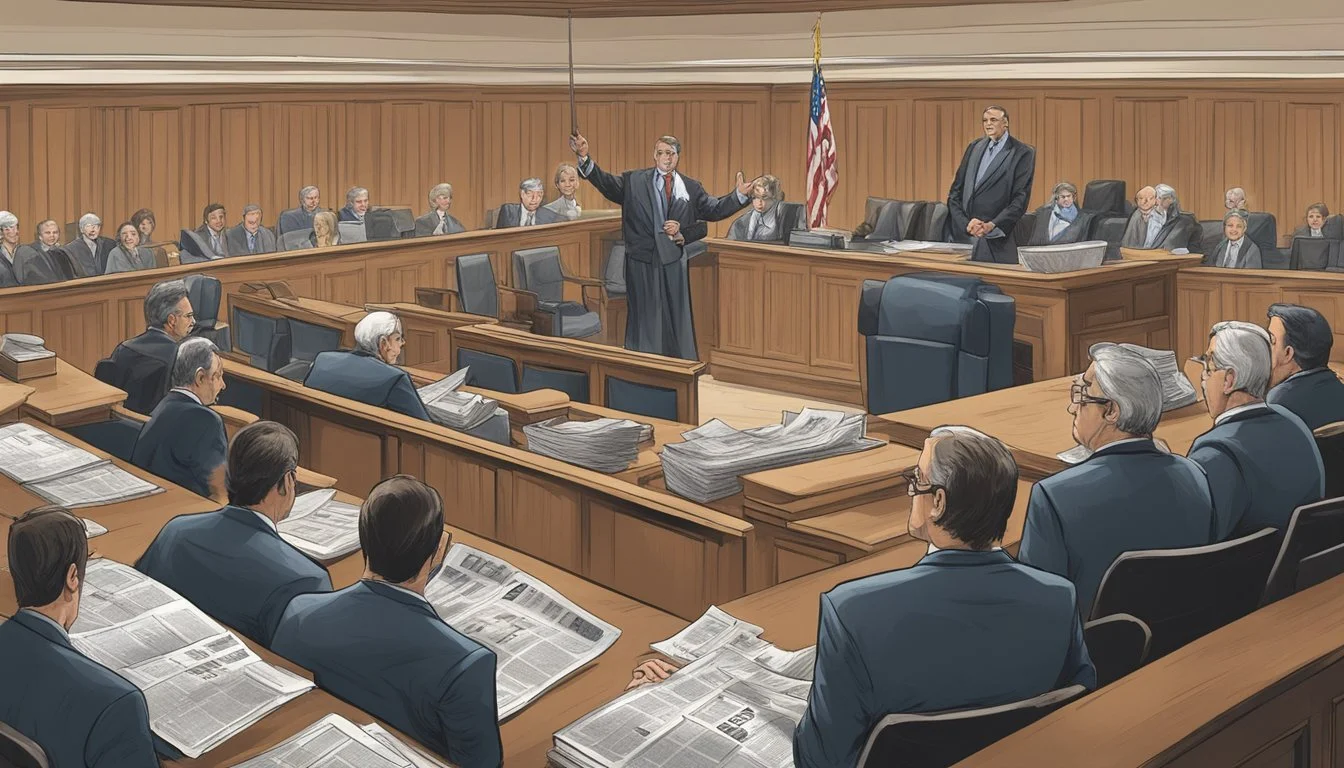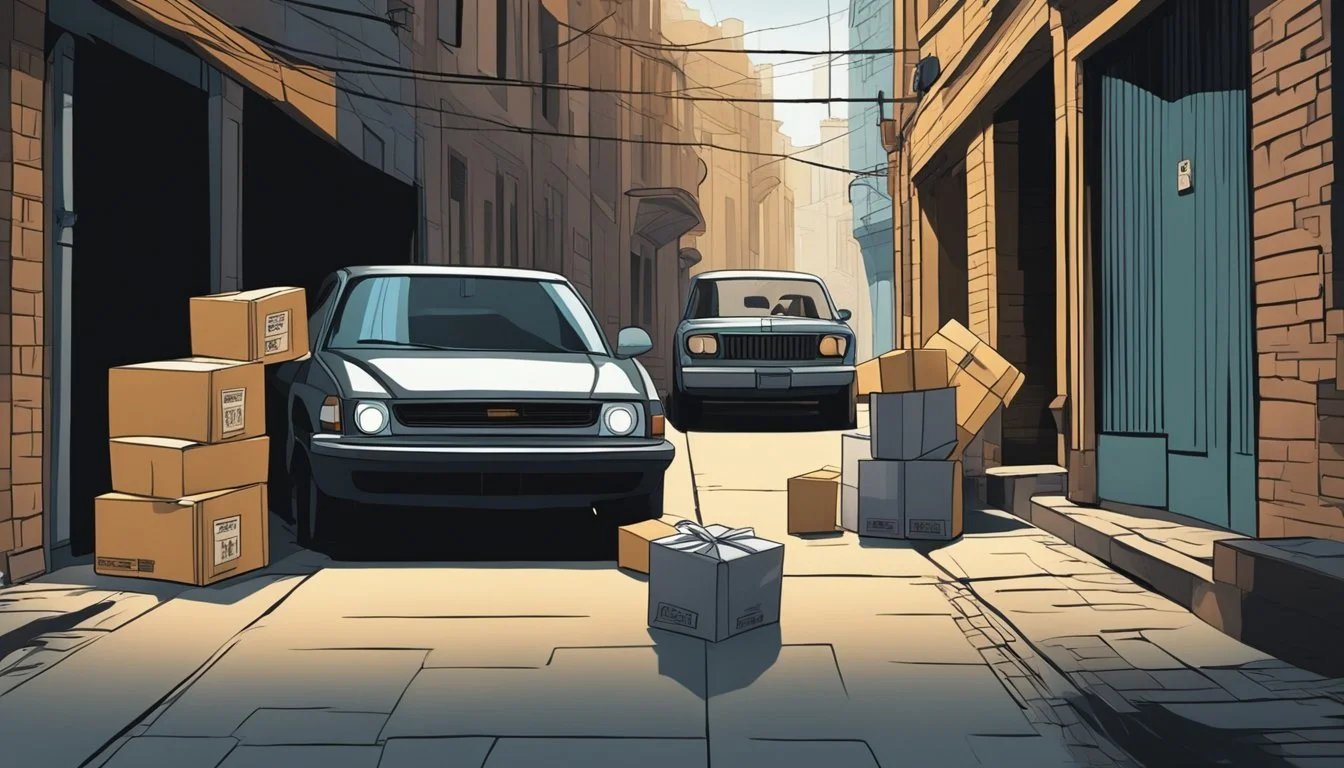Unmasking the Drug Trade: The Real Events of Blow
A Deep Dive into George Jung's Cocaine Empire
The 2001 film "Blow" captivated audiences with its portrayal of George Jung's life as a notorious drug trafficker. Based on true events, the movie offers a glimpse into the dark underbelly of the cocaine trade during the 1970s and 1980s. George Jung, born in Massachusetts in 1942, rose from a small-time marijuana dealer to become a key figure in the Medellín Cartel, responsible for smuggling massive amounts of cocaine into the United States.
Jung's real-life story mirrors the high-stakes thriller depicted on screen. His journey from modest beginnings to the upper echelons of the drug trade is filled with twists and turns that rival any fictional narrative. The film, starring Johnny Depp, chronicles Jung's ascent in the narcotics world and his eventual downfall.
The true events behind "Blow" shed light on the complex web of relationships and operations that fueled the cocaine epidemic in America. Jung's involvement with the Medellín Cartel exposed him to vast sums of money and immense danger, ultimately leading to his arrest and imprisonment. His story serves as a cautionary tale about the consequences of pursuing wealth through illegal means.
Origins of the Cocaine Trade
Cocaine's journey from South American jungles to global markets began in the 1970s. The drug's popularity skyrocketed in the United States, creating immense demand.
Colombia emerged as the epicenter of cocaine production. Farmers in remote regions cultivated coca plants, the raw material for cocaine manufacturing.
Local criminal organizations recognized the lucrative potential. They established processing labs and distribution networks to meet growing international demand.
Pablo Escobar and the Medellín Cartel became dominant forces. They revolutionized smuggling methods, using small planes and creative concealment techniques.
George Jung played a pivotal role in expanding U.S. distribution. His connections with Colombian suppliers facilitated large-scale importation to American shores.
The cocaine trade's rapid growth led to:
Increased violence in producing countries
Corruption of government officials
Destabilization of local economies
Health crises in consuming nations
By the 1980s, cocaine had become a multi-billion dollar industry. Its far-reaching effects transformed societies and sparked intense law enforcement efforts worldwide.
George Jung: Early Life and Entry into Drug Smuggling
George Jung was born on August 6, 1942, in Boston, Massachusetts. He grew up in a middle-class family in Weymouth, where his father worked as a plumber and his mother as a homemaker.
As a young man, Jung attended the University of Southern Mississippi. It was during this time that he first encountered marijuana and began experimenting with drugs.
In 1967, Jung made a pivotal decision that would shape the course of his life. During a trip to California, he realized the potential for profit in smuggling marijuana from Mexico to the United States.
Jung's initial foray into drug trafficking involved flying small planes loaded with marijuana across the U.S.-Mexico border. His operation quickly expanded, and he soon became known for his daring smuggling tactics.
By the early 1970s, Jung had established himself as a major player in the marijuana trade. He formed connections with powerful drug cartels and developed sophisticated methods for transporting large quantities of drugs.
Jung's success in marijuana smuggling laid the groundwork for his later involvement with cocaine trafficking. This transition would ultimately lead to his association with the infamous Medellín Cartel.
Throughout his early career, Jung displayed a remarkable ability to evade law enforcement. His charisma and business acumen contributed to his rapid rise in the drug trade.
The Medellín Cartel Connection
The Medellín Cartel emerged as a powerful force in the global cocaine trade, with Pablo Escobar at its helm. George Jung's partnership with the cartel played a crucial role in expanding its reach into the United States.
Rise of Pablo Escobar
Pablo Escobar founded the Medellín Cartel in the late 1970s. He quickly rose to prominence through a combination of ruthless tactics and shrewd business acumen.
Escobar built a vast network of suppliers, smugglers, and distributors. His cartel controlled an estimated 80% of the global cocaine market at its peak.
The organization's success was fueled by innovative smuggling methods and strategic alliances. Escobar's wealth grew to astronomical levels, earning him a spot on Forbes' list of billionaires.
Partnership with George Jung
George Jung's collaboration with the Medellín Cartel began in the early 1980s. Jung's expertise in smuggling marijuana made him an attractive partner for cocaine distribution.
The partnership allowed Jung to tap into the cartel's vast supply chain. He utilized his connections in the United States to establish new distribution networks.
Jung's role was crucial in opening up the American market to Colombian cocaine. His efforts helped the cartel flood the U.S. with unprecedented quantities of the drug.
Expansion of Operations
The Medellín Cartel's operations expanded rapidly with Jung's involvement. New smuggling routes were established, including air drops and commercial flights.
The cartel's influence spread beyond Colombia, reaching into other Latin American countries. They set up processing labs and distribution centers across the region.
Profits soared as the demand for cocaine in the U.S. skyrocketed. The cartel's annual revenue was estimated to be in the billions of dollars.
However, this expansion also attracted increased attention from law enforcement agencies. The U.S. Drug Enforcement Administration (DEA) intensified its efforts to dismantle the cartel's operations.
Mechanics of the Drug Trade
The drug trade depicted in "Blow" involved complex logistics and international networks. Smugglers like George Jung utilized various transportation methods to move cocaine from South America to the United States.
Small planes often flew drugs from Colombia to drop zones in the Caribbean. Speedboats then collected the packages and transported them to the Florida coast.
Jung and his associates also employed human couriers, known as "mules," to carry smaller quantities on commercial flights. These individuals concealed drugs in luggage or swallowed pellets to evade detection.
The Medellín Cartel controlled coca production in Colombia. They processed raw coca leaves into cocaine powder in jungle laboratories. The finished product was then packaged for export.
Distribution in the U.S. relied on a hierarchical system:
Importers (like Jung)
Wholesalers
Street-level dealers
Money laundering played a crucial role in the operation. Cash proceeds were often funneled through offshore bank accounts or legitimate businesses to conceal their origins.
The drug trade's success depended on corruption at various levels. Bribes to law enforcement and government officials helped protect operations and ensure smooth transit of shipments.
Law Enforcement Tactics
Drug trafficking operations like those depicted in "Blow" are combated through sophisticated law enforcement strategies. These include extensive surveillance, deep undercover work, and coordinated international efforts to disrupt criminal networks across borders.
Surveillance Techniques
Law enforcement agencies employ advanced surveillance methods to monitor suspected drug traffickers. Wiretapping allows authorities to intercept phone calls and electronic communications. Aerial surveillance using planes and drones provides visual intelligence on shipments and meetings.
GPS tracking devices are covertly placed on vehicles to monitor movements. Financial surveillance tracks suspicious transactions and money laundering activities.
Social media monitoring helps map criminal networks and gather evidence. Surveillance cameras in public areas can capture critical footage of exchanges or drop-offs.
Undercover Operations
Undercover agents infiltrate drug trafficking organizations to gather intelligence from the inside. These operations often span months or years as agents slowly gain trust and access.
Agents may pose as buyers, sellers, or transporters to map out the network's structure and methods. They collect evidence through recorded conversations, photographs, and witnessed transactions.
Controlled buys allow agents to purchase drugs directly from dealers as evidence. Informants from within criminal organizations often provide crucial intelligence to undercover teams.
International Cooperation
Drug trafficking frequently crosses national borders, requiring coordinated international efforts. Agencies like Interpol and Europol facilitate information sharing between countries' law enforcement.
Joint task forces combine resources and expertise from multiple nations to target large criminal networks. Extradition agreements allow countries to prosecute fugitives who flee abroad.
Maritime patrols and inspections at ports aim to intercept drug shipments. Border security cooperation helps prevent smuggling between neighboring countries.
Intelligence sharing on money laundering helps track and seize drug profits internationally. Diplomatic efforts promote unified anti-drug policies and enforcement across regions.
The Downfall of Jung and Escobar
The drug empires of George Jung and Pablo Escobar crumbled due to law enforcement efforts and internal conflicts. Their downfall marked the end of an era in the cocaine trade.
Arrest of George Jung
George Jung's criminal career came to an abrupt halt in 1994. He was arrested in his Massachusetts hometown after a betrayal by a former associate. Jung had been living under an alias and continuing his drug trafficking activities.
The arrest was part of a larger operation targeting remnants of the Medellín Cartel. Jung faced multiple charges related to cocaine smuggling and distribution.
In 1995, Jung was sentenced to 60 years in federal prison. His lengthy sentence reflected his significant role in the cocaine trade and his prior convictions.
Collapse of the Medellín Cartel
The Medellín Cartel's decline began in the late 1980s. Increased pressure from Colombian and U.S. authorities weakened the organization's power and influence.
Key factors in the cartel's collapse included:
Internal conflicts and power struggles
Rivalry with the Cali Cartel
Targeted assassinations of cartel members
Improved law enforcement tactics and cooperation
By the early 1990s, the once-dominant Medellín Cartel had largely disintegrated. Many of its leaders were arrested, killed, or forced into hiding.
Escobar's Death
Pablo Escobar met his end on December 2, 1993, in Medellín, Colombia. He was located through phone surveillance after months on the run.
A joint task force of Colombian police and U.S. agents raided Escobar's hideout. In the ensuing shootout, Escobar was killed on the rooftop of a residential building.
Escobar's death marked the definitive end of the Medellín Cartel. It signaled a shift in the global cocaine trade, with other organizations filling the power vacuum.
The Colombian government celebrated Escobar's demise as a major victory in the war on drugs. His death, however, did not end Colombia's drug-related violence or cocaine production.
Legal and Political Repercussions
George Jung's involvement in the drug trade led to significant legal consequences. He faced multiple arrests and prison sentences throughout his criminal career.
In 1974, Jung was arrested in Chicago for smuggling 660 pounds of marijuana. This incident resulted in a four-year prison term at the Federal Correctional Institution in Danbury, Connecticut.
Jung's most substantial legal trouble came in 1994 when he was arrested with 1,754 pounds of cocaine in Topeka, Kansas. This arrest led to a 60-year prison sentence, highlighting the severe penalties associated with large-scale drug trafficking.
The political landscape of the 1970s and 1980s played a crucial role in shaping the legal response to drug crimes. President Nixon's declaration of the "War on Drugs" in 1971 set the stage for increasingly harsh penalties.
Key legislation included:
Comprehensive Drug Abuse Prevention and Control Act (1970)
Anti-Drug Abuse Act (1986)
Anti-Drug Abuse Act (1988)
These laws established mandatory minimum sentences for drug offenses and increased funding for drug enforcement agencies.
Jung's story exemplifies the far-reaching impact of these policies on individuals involved in the drug trade. His experiences shed light on the complex interplay between criminal activities, law enforcement efforts, and evolving drug policies.
Cultural Impact and Media Portrayal
The film "Blow" sparked widespread interest in the cocaine trade and its key figures. It influenced public perceptions and stimulated further exploration of the drug trafficking world in various media forms.
Cinematic Interpretation of 'Blow'
"Blow" brought George Jung's story to mainstream audiences through vivid cinematography and costume design. The film effectively captured the essence of the 1970s and 1980s drug culture, immersing viewers in an era of excess.
Johnny Depp's portrayal of Jung humanized the notorious drug trafficker, adding complexity to the character. This nuanced depiction challenged simplistic views of criminals in the drug trade.
The movie's stylized approach glamorized certain aspects of the cocaine business, prompting discussions about the ethics of portraying real-life criminals on screen.
Literature and Journalism
Bruce Porter's 1993 book "Blow: How a Small Town Boy Made $100 Million with the Medellín Cocaine Cartel and Lost It All" served as the basis for the film. The book provided a detailed account of Jung's life and operations.
Journalists and authors continued to explore the cocaine trade after the film's release. Numerous articles and books delved into the lives of other key players in the drug trafficking world.
This increased media coverage led to a deeper public understanding of the complex networks and personal stories behind international drug operations.
Public Perception Shifts
"Blow" contributed to changing public attitudes towards drug traffickers. The film's portrayal of Jung as a flawed but relatable character encouraged viewers to consider the human elements of the drug trade.
The movie sparked debates about drug policy and enforcement strategies. It highlighted the vast scale of cocaine trafficking operations and their far-reaching impacts on society.
Some critics argued that the film romanticized drug trafficking, while others praised its unflinching look at the consequences of involvement in the illegal drug trade.
The State of Drug Trafficking in the Modern Era
Drug trafficking remains a significant global issue in the 21st century. Technological advancements have transformed how illicit substances are produced, distributed, and sold.
The internet and darknet markets now play a major role in drug transactions. Cryptocurrencies provide anonymity for buyers and sellers, making detection more challenging for law enforcement.
International cartels continue to dominate large-scale trafficking operations. However, smaller, more agile criminal networks have also emerged, adapting quickly to changing markets and enforcement efforts.
Synthetic drugs like fentanyl have become increasingly prevalent. Their potency and ease of production make them attractive to traffickers, despite the heightened risks to users.
Maritime and air routes remain crucial for intercontinental drug shipments. Traffickers constantly innovate concealment methods to evade detection at borders and ports.
The opioid crisis has shifted focus towards prescription drug diversion and illicit manufacturing. This has blurred lines between legal pharmaceutical supply chains and illegal drug markets.
Environmental concerns have arisen due to drug production's impact on ecosystems. Deforestation linked to drug cultivation and chemical dumping from labs pose serious threats to biodiversity.
Human trafficking often intersects with drug operations, creating complex criminal enterprises that exploit vulnerable populations for multiple illegal activities.


